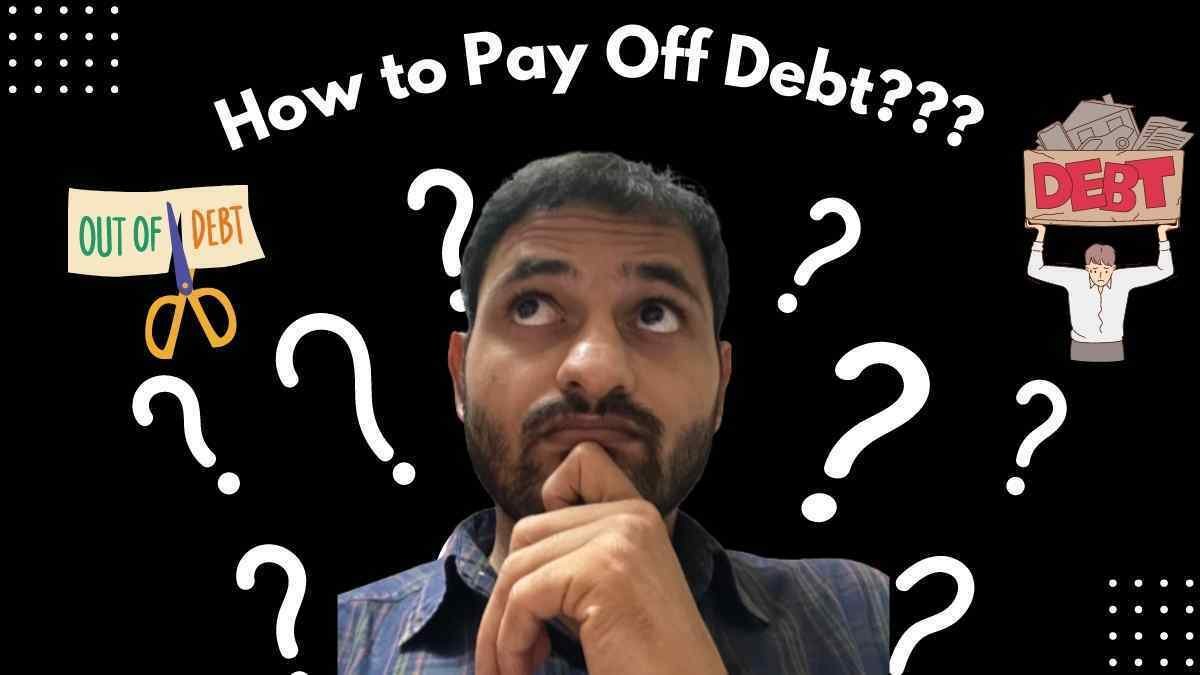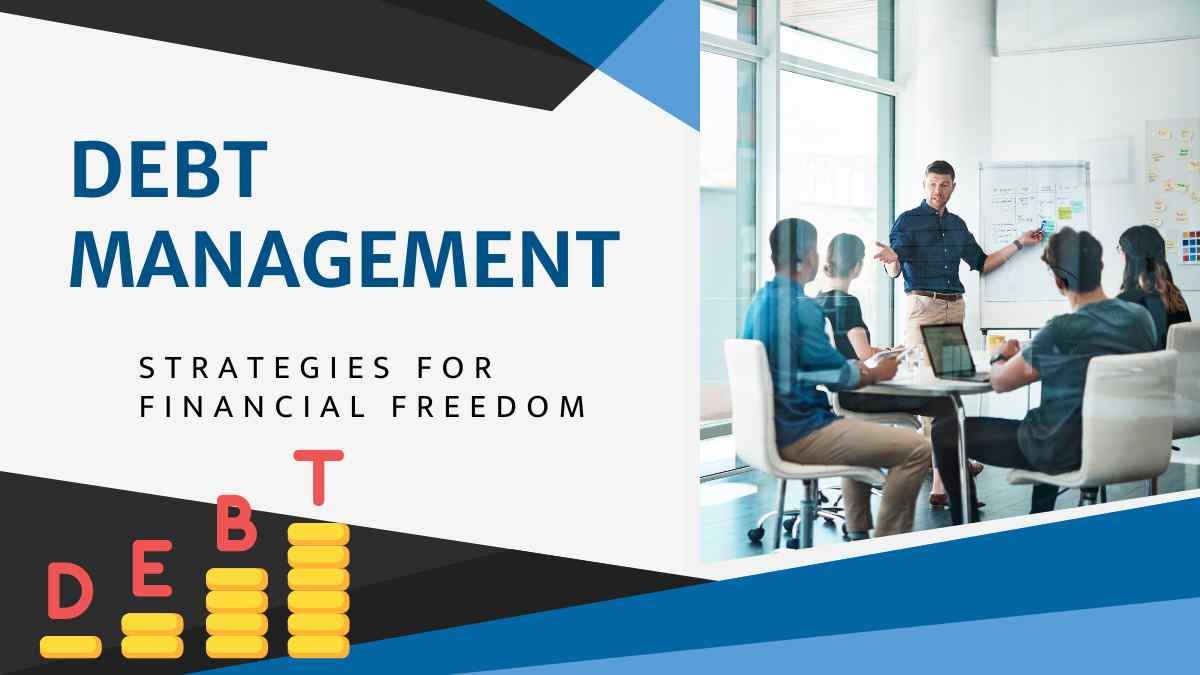Last updated on July 22nd, 2023 at 05:38 am
Debt significantly impacts individuals and households, affecting their financial stability and freedom. Today we learn how to pay off debt through the comprehensive guide.
Many people find themselves burdened by credit cards, loans, mortgages, and student loans, contributing to America’s $16.15 trillion of total household debt.
Table of Contents
Paying off debt is crucial for regaining control of personal finances and achieving long-term financial goals.
Understanding Your Debt Situation to pay off debt
To effectively pay off debt, assessing your total debt amount and understanding its implications on your overall financial health is essential.
Different types of debt, such as credit cards, loans, mortgages, and student loans, carry varying interest rates and payment terms.
By evaluating your debt situation, you can prioritize your repayment efforts and make informed decisions about managing your finances.
Creating a Debt Repayment Strategy
The debt snowball method is effective because it provides psychological benefits by prioritizing small wins and building momentum.
By paying off smaller debts first, individuals experience a sense of achievement, which motivates them to continue the debt repayment journey.
Mainly we focus on three methods – 1. Debt Snowball Method, 2. Debt Avalanche Method, 3. Debt Consolidation.
Debt Snowball Method
The debt snowball method is an effective strategy for paying off debt.
It involves starting with the smallest debt balance and paying it off first while making minimum payments on other debts.
This approach builds momentum and motivation as you individually eliminate debts.
Focusing on the smallest debts initially gives you a sense of accomplishment and confidence.
The creators designed this method to eliminate debts and gradually create progressive momentum and motivation.
As you pay off each small debt, the freed-up funds are directed towards the next smallest debt, creating a “snowball” effect.
Here’s how the debt snowball method works
List your debts: Begin by listing all your debts in ascending order from the smallest balance to the largest. This order relies on the amount owed, not the interest rate.
Minimum payments: Make minimum payments on all your debts except for the smallest one. Staying current on all your obligations effectively ensures that you manage your financial commitments.
Extra payments: Determine how much extra money you can allocate towards paying off the smallest debt. You could achieve this by cutting expenses, increasing income, or both.
Please focus on the smallest debt: Pay the minimum payment plus the extra amount you identified towards the smallest debt until you fully pay it off. Demonstrating progress and achieving a sense of accomplishment provides a positive outcome.
Must Read: Impact Investing: Driving Positive Change through Financial Decisions
Snowball effect: Once the smallest debt pays off, take the total amount you were paying towards that debt (minimum payment plus extra) and add it to the minimum price of the next smallest debt. Increasing the amount you can put towards the next debt accelerates its repayment.
Repeat and continue: Repeat the process, focusing on the next smallest debt, and continue until all obligations pay off in full.
Pay Off Debt by Using Debt Avalanche Method
The debt avalanche method focuses on prioritizing debts with the highest interest rates.
Instead of starting with the smallest balance, you first tackle the debt with the highest interest rate.
Doing so saves money on interest payments in the long run.
While the progress may be less visible initially, this method is more cost-effective and efficient in debt repayment.
The debt avalanche method is a strategy for paying off debt that focuses on eliminating the debt with the highest interest rate first, followed by the debt with the next highest interest rate, and so on.
The objective of this method is to save money on interest payments and reduce the time it takes to become debt-free.
Here’s how the debt avalanche method works
Make a list of all your debts: List all your debts, including credit cards, personal loans, student loans, auto loans, and medical bills.
Rank the debts by interest rate: Arrange your debts in descending order based on their rates, from highest to lowest.
Allocate available funds: Determine how much you can allocate each month towards debt repayment, considering your budget and expenses. This amount should be above the minimum payments required for each debt.
Pay minimum payments on all debts: Make the minimum monthly payments on all your debts to avoid penalties or late fees.
Focus on the highest-interest debt: With the debt avalanche method, you concentrate any extra funds towards paying off the debt with the highest interest rate while making minimum payments on the other debts.
Progress to the next highest-interest debt: Once the highest-interest debt pays off, redirect the funds previously allocated to that debt towards the next debt on the list with the next highest interest rate. Continue this process until all obligations pay off.
By first targeting debts with higher interest rates, the debt avalanche method minimizes the amount of interest accumulating over time.
Also Read: Real Estate Investment: Portfolio & Techniques
It allows you to pay off your debts more efficiently and potentially saves you money in the long run
Debt Consolidation Method to Pay Off Debt
Debt consolidation is an option to consider for streamlining your debt repayment.
It involves combining multiple debts into a single loan, typically through personal loans or balance-transfer credit cards.
Debt consolidation can simplify your repayment process with a single monthly payment and potentially lower interest rates.
However, it’s essential to carefully weigh the pros and cons and seek professional advice before opting for debt consolidation.
Boosting Your Debt Payoff Efforts
Now we talk about some beneficial efforts to boost your payoff efforts.
We are increasing our income to pay off debt.
Exploring additional sources of income, such as side hustles or negotiating a higher salary, can significantly boost your debt payoff efforts.
By increasing your income, you’ll have more financial resources for debt repayment, accelerating the process and reducing the overall interest paid.
Budgeting and Expense Management
Creating a comprehensive budget is essential for effectively managing your finances and prioritizing debt payments.
By tracking your income and expenses, you can identify areas where you can cut unnecessary costs and discretionary spending.
Allocating a significant portion of your budget towards debt repayment will expedite the payoff process.
Seeking Financial Assistance
Financial assistance may be necessary to overcome debt challenges.
Debt relief options, such as credit counselling agencies or financial advisors, can provide guidance and support in managing your debt.
They can help you negotiate with creditors and develop a customized plan to address your financial situation.
Staying Motivated and Overcoming Challenges by Celebrating Milestones
Setting achievable milestones throughout your debt repayment journey is vital for staying motivated.
Celebrating small victories along the way, such as paying off a particular debt or reaching a specific milestone, will reinforce your progress and provide the encouragement needed to continue.
Must Read: Mastering Debt Management
Conclusion
In conclusion, this comprehensive guide has equipped you with practical strategies and expert tips to pay off your debt. By implementing a budget, prioritizing repayment, and exploring additional income sources, you can take control of your finances and achieve financial freedom. Stay motivated, celebrate milestones, and seek professional help if needed. Remember, paying off debt is a journey towards regaining control of your life and creating a brighter financial future. You can pave the way to a debt-free and financially secure future with determination and the tools provided.




